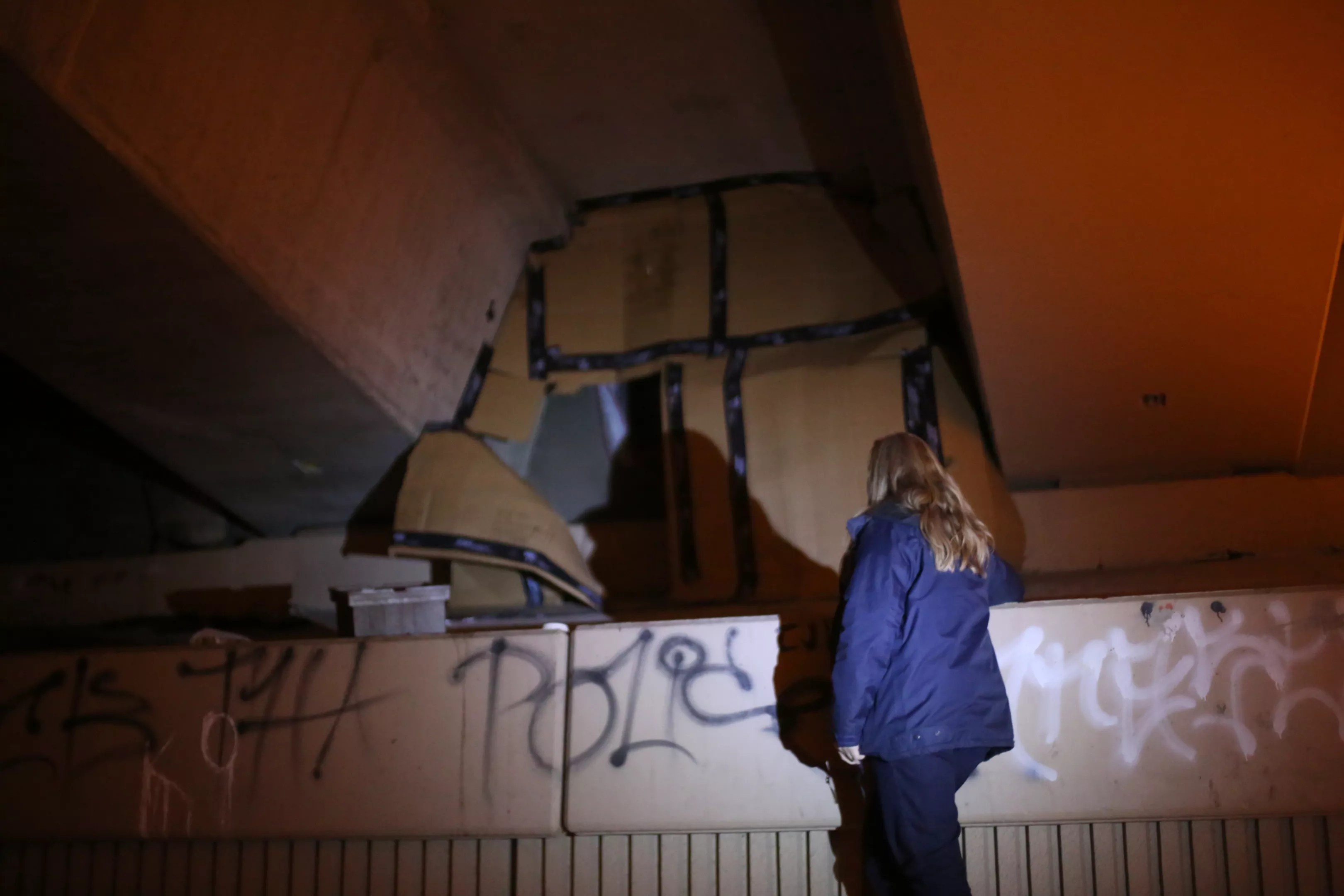
Dylan Hollingsworth

Audio By Carbonatix
Every year, homeless organizations in North Texas conduct a count of the homeless populations in Dallas and Collin counties. Housing Forward, the lead agency for the area’s homeless response system, is asking for volunteers who can help with the 2023 count.
The organization is looking for about 1,200 volunteers to help conduct the count on Jan. 26. People interested in volunteering can sign up on Housing Forward’s website. One goal of homelessness advocates coming out of this count is the creation of more permanent supportive housing, the type of housing often needed for the chronically homeless.
The count is required by the U.S. Department of Housing and Urban Development for communities that receive certain funds to combat homelessness. It usually occurs on a single morning or night in January, when cold weather is likely to drive more of the homeless into shelters. This makes them easier to find and count. The federal government actually requires two counts of the homeless. Counting the sheltered homeless is required every year, and a count of the unsheltered homeless population is required every two years. But Dallas and Collin counties conduct both counts every year on the same day or night.
What volunteers record during the count helps measure how well the local homeless response system is working and who is becoming or remaining homeless.
Will you step up to support Dallas Observer this year?
At the Dallas Observer, we’re small and scrappy — and we make the most of every dollar from our supporters. Right now, we’re $14,000 away from reaching our December 31 goal of $30,000. If you’ve ever learned something new, stayed informed, or felt more connected because of the Dallas Observer, now’s the time to give back.
“That population that needs that permanent supportive housing has grown, and our stock of permanent supportive housing has not grown at the same rate.” – Sara Craig, Housing Forward
The last count found 4,410 homeless people on a single night in 2022. About 31% of them were unsheltered. This is a slight decrease in overall homelessness compared to the previous year, when some 4,570 people were without a home. A majority of the homeless population, 90.6%, lives in Dallas County. Across both Dallas and Collin counties, most homeless people, 83.2%, are over the age of 24.
Black people are still disproportionately represented among the homeless. They make up just 24% of the general population but account for 54.2% of the homeless population. About 38.3% of the homeless are white, 1.2% are Asian, 1.3% are American Indian, 0.3% are Pacific Islanders and 4.7% are multiple races, according to the 2022 point-in-time count. A majority of the homeless population, 65.3%, is male. Women accounted for 34% of the homeless, and 0.3% said their gender is not singularly male or female.
According to the 2022 count, it was still rare for people to exit homeless services and get into permanent housing. This occurred in only 30% of cases. People are homeless for about 100 days on average. Those who got into housing were still in a home two years later, the 2022 count found. There were 302 homeless veterans that year, a nearly 30% decrease compared to 2019. There was also a 19.8% decrease in family homelessness compared to three years prior. Family homelessness accounted for 822 people in 2022. However, there’s been a sharp increase in chronic homelessness. Since 2019, the chronic homeless population has shot up 89.3%.
Sara Craig, vice president of development and communications at Housing Forward, said the chronically homeless often need more supportive housing assistance. While that population has increased, the number of available permanent supportive housing units has lagged. Since 2019, the permanent supportive housing stock has increased by only 5%, according to Housing Forward.
“That’s one of the areas that has grown a very small percentage as our unhoused population has aged,” Craig said. “That population that needs that permanent supportive housing has grown, and our stock of permanent supportive housing has not grown at the same rate.”
While Housing Forward seeks more volunteers, the organization is also looking for people and organizations that can donate care packages that will be given to the homeless. The care packages should include gloves, hand warmers, hats, toiletries, masks, blankets, hand sanitizer and a bag to put the supplies in. Deadline for the donations is Jan. 16 so they can be ready for the count the following week.